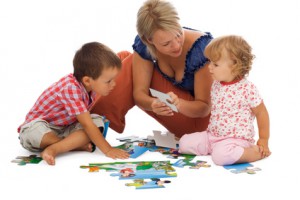Fred Rogers is credited with saying, “Play is often talked about as if it were a relief from serious learning. But for children play is serious learning. Play is really the work of childhood.” I agree. Alison Gopnik also agrees. She reviews research in her book The Gardner and the Carpenter which suggests:
- Play helps children learn to interact with others. It allows them to practice negotiating and compromising as well as other social skills.
- Exploratory play provides the opportunities for children to learn how things work. It helps them learn about their environment as well.
- Pretend play encourages children to think about possibilities and options. It helps them consider potential responses to various situations. It provides an opportunity to learn how another person might think or feel in various situations. This can increase our children’s empathy and compassion.
- As children play randomly with various toys and friends, unexpected situations arise. In response, our children learn how to better deal with the unexpected.
Review that short list of the benefits of play. We, as adults, will also benefit from learning and practicing those skills. And that’s not all. There are more things play provides that will benefit children and adults. For instance, play helps reduce depression and increase social connectedness. Play enhances a sense of personal agency. It promotes our ability to problem-solve. It improves our overall sense of well-being. What adult doesn’t want these attributes in their own life? And what parent does not want these attributes to grow within the lives of their children’s lives?
Mr. Rogers had it right. “Play really is serious learning,” but not just for children. It is “serious learning” for adults too. It’s “serious learning” for the whole family. With that in mind, I want to make a recommendation for you and your family. Take play seriously. Grab your children and play every day. Play a game. Play an imaginative, make-believe game or a board game. Engage in sports play. Play music. Playfully explore a new place. Meet another family and enjoy a playful time together. Choose whatever avenue of play you like best…just play…every day…play! Have fun… and reap the benefits of “the serious learning” of play for your whole family.









